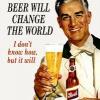I still think if you reduce it to one lane between Wales & the Sutter Middle you will create problems for Duchow & School St. if it creates a backup. If the city does something to discourage cut-through traffic onto residential streets, then it would probably work.
As noted in Howdy's post, people already duck out at Montrose and/or Wales or Glenn and race up School St./Wales/Glenn to avoid the mess.
The complete streets concept is worth looking at, but the area is already walkable so what are we trying to fix? I tend to walk as the crow flies, through parking lots and along storefronts. The biggest problem is crossing East Bidwell at the intersections. In fact, I believe those bicycle/ped accidents were at crossings and those statistics didn't say who was at fault. (There were two bike/vehicle accidents recently in the crime log and I believe both were in areas that have bike lanes: Oak Ave. Parkway/Folsom Auburn and Blue Ravine/Turnpike).
I do agree East Bidwell isn't very bike-friendly between Blue Ravine & Coloma, but Riley is a very viable alternative, as well as is School St. or Duchow and are already used by cyclists very frequently. In fact, a majority of the cyclists also ride as the crow flies through parking lots, and, frankly, most of them are carrying large bags of recyclables and are just going down Glenn (also not bike friendly but isn't being addressed) to get to the Walmart parking lot.
I don't think any of the businesses oppose a roundabout at the end of EB Street where it meets up with the middle school, but then what happens when it meets up with Riley? That's already a problem area. How is this going to work with whatever the school district has planned for a reconfigured pick-up and drop-off for buses and parents?
Agreed, if you don't do traffic calming in the neighborhoods, you can't mess with traffic on the adjacent arterials. The problem is, our city won't consider real traffic calming. It's always vetoed by public safety and solid waste, if not by the council. Why, because, as Chad has pointed out, the only way to provide good response time in a sprawling city is to make sure the emergency vehicles can drive fast on every street (because it is too expensive to have enough fire stations to keep the distances short). They even vetoed speed humps in a residential alley in the historic district because of response time and concerns about wear and tear on garbage trucks.
While School Street and Riley are OK alternatives for cyclists trying to bypass the mess on E. Bidwell, the point of complete streets is to provide access to the destinations on E. Bidwell. The alternatives get you close, and sure, you can use parking lots (I highly discourage this as parking lots are some of the most dangerous places to ride a bike -- consider that every car you pass is a potential conflict backing into you with poor visibility) and alleys (I use the one behind Target all the time), but they do not provide safe access to all destinations along E. Bidwell (and trust me, I know every alternative access for bikes in the area). But that's the point; if you have to use parking lots and alleys to get around on foot and by bike, then the infrastructure is not adequate and we are actively discouraging people from walking or biking, because most people won't search out the "Winkelman Routes", as we fondly call them.
As for the pedestrian facilities, they are marginal at best. Sidewalks on E. Bidwell are 4' to 5' wide, where they exist. They do not meet ADA in many places, and have poles obstructing frequently. Also, they are at back of curb with no shoulder, so cars are whizzing by at 40 mph only a foot or two away. many of the businesses along E. Bidwell are not even accessible from the sidewalk without walking up an entrance driveway. And, as others have mentioned, crossing opportunities are very limited -- Blue Ravine, Montrose, Wales and Glenn. It's a long way from Glenn to the lighted crosswalk at the middle school. Yes, the E. Bidwell corridor is walkable...if you compare it to the absolute pedestrian hell that exists in suburbia in many other parts of the country, especially the south and southwest, but not to ignore the midwest (there are lots of places where a pedestrian can not even cross the street at a signalized intersection because there is always a conflicting movement with a green light), but that isn't saying much.
I won't argue with anyone that the Blue Ravine - E. Bidwell area is a traffic nightmare at times, especially mid-day. Perhaps it wasn't such a bright idea to approve all those big boxes on a not-so-big road. But, as Chad alluded, the insanity is continuing to try to fix traffic problems by making ever bigger roads with ever bigger (and more dangerous and less efficient intersections) to accommodate automobile traffic at the expenses of all other modes. People argue that we need to, because every one drives everywhere. Well, there's a reason for that. We've designed out all other modes of transportation by separating destinations by too much distance and failing to provide infrastructure for walkers, cyclists and transit. People drive everywhere because we've left them no choice (unless they are creative and stubborn, or desperate).



















